The relocation of the annual burning of a towering effigy from San Francisco’s Baker Beach to the desert wilderness of northern Nevada in 1992 marked the birth of what would become the renowned Burning Man festival.
The transformation of the Nevada playa, once the floor of an inland sea, into a surrealistic circus of artistic expression, kindness, avant-garde theatrics, and at times, unconventional experiences, has captivated and intrigued attendees for over three decades.
However, as the festival expanded, it encountered challenges that led to questions about its evolution and adherence to its founding principles.
The festival’s exponential growth raised concerns about the potential departure from the core tenets of radical inclusion, expression, participation, and the commitment to “leave no trace.”
The rapid increase in attendance and the emergence of luxurious accommodations, alongside the influx of billionaires and celebrities, prompted reflection on whether Burning Man was straying from its original ethos.
These developments sparked discussions about the festival’s sustainability and its ability to maintain its unique character in the face of commercialization and widespread popularity.
The critical juncture in 2011, when tickets sold out for the first time, prompted organizers to implement a short-lived lottery system, which left some individuals excluded from an event that was intended to be radically inclusive.
This pivotal moment underscored the tensions between growth and preservation, as well as the delicate balance between expansion and the maintenance of Burning Man’s distinctive spirit.
Katherine Chen, a sociology professor in New York City, expressed concerns about whether Burning Man would become a victim of its own success.
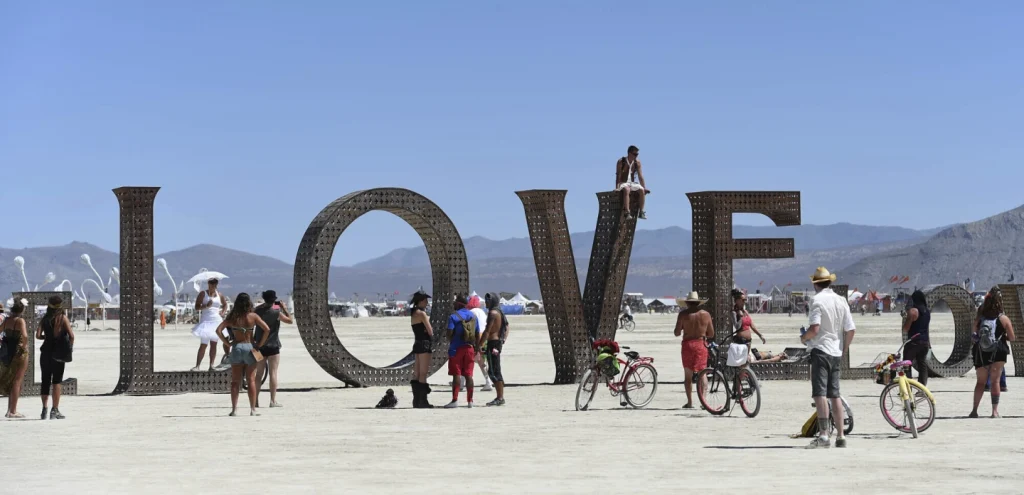
Her sentiments echoed the sentiments of many who cherished the festival’s origins and ethos, and who feared that its evolution might compromise the values that had defined it for so long.
The festival’s journey from a small, intimate gathering to a global phenomenon had ignited debates about the impact of its growth on its fundamental principles and the experience of its participants.
Amidst these discussions, the festival faced a significant challenge in ensuring that attendees adhered to the principle of “leaving no trace,” particularly after the torching of the 80-foot wooden sculpture that symbolizes “the Man.”
This underscored the ongoing struggle to balance the freedom of expression and celebration with the responsibility to preserve and respect the natural environment in which the festival takes place.
In conclusion, the evolution of Burning Man has been a testament to the transformative power of art, community, and self-expression.
However, the festival’s growth has also prompted introspection about the delicate equilibrium between expansion and preservation, commercialization and authenticity, and inclusivity and exclusivity.
As Burning Man continues to navigate these complexities, it stands at a crossroads, where the choices made will shape its future and determine whether it can sustain its core principles while embracing change.
The blank canvas of the Nevada desert has borne witness to the evolution of a cultural phenomenon, and the story of Burning Man is a reflection of the enduring tension between growth and the preservation of its unique spirit.
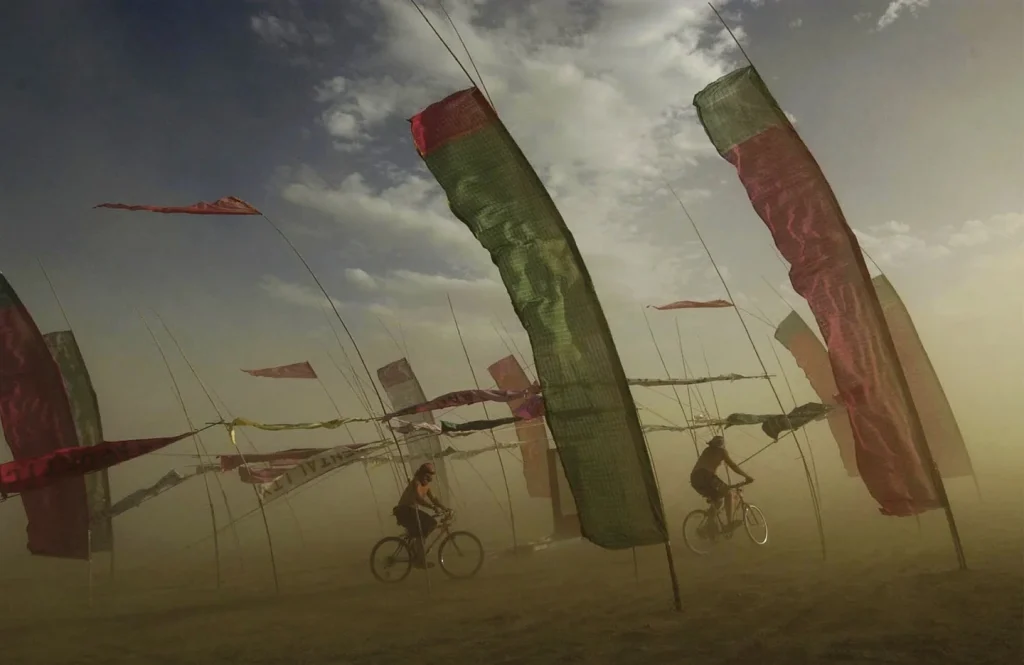
The Black Rock Desert, located 110 miles north of Reno, recently experienced an unusual rainstorm that transformed the area into a muddy quagmire, causing a delay in the departure of 80,000 revelers.
Following this, organizers faced a race against time to clean up the site within six weeks, as per the terms of a federal permit.
Despite the challenges, they managed to meet the requirements, albeit with some recommendations for future improvements.
As a result, the U.S. Bureau of Land Management has granted Burning Man permission to utilize federal land for the event next year.
However, the future of the Burning Man festival remains a topic of debate, particularly as divisions emerge between traditional participants and newer attendees who are more affluent and technologically oriented.
Longtime attendees are concerned that the newer demographic is becoming disconnected from the event’s original ethos.
Over the years, Burning Man has evolved significantly, transitioning from a gathering of a few hundred individuals to a temporary city that ranks as Nevada’s third largest after Las Vegas and Reno. The festival’s attendance has skyrocketed from 4,000 in 1995 to over 50,000 in 2010.
Amidst these transformations, veteran Burners express a sense of nostalgia, lamenting that “It ain’t like it used to be.”
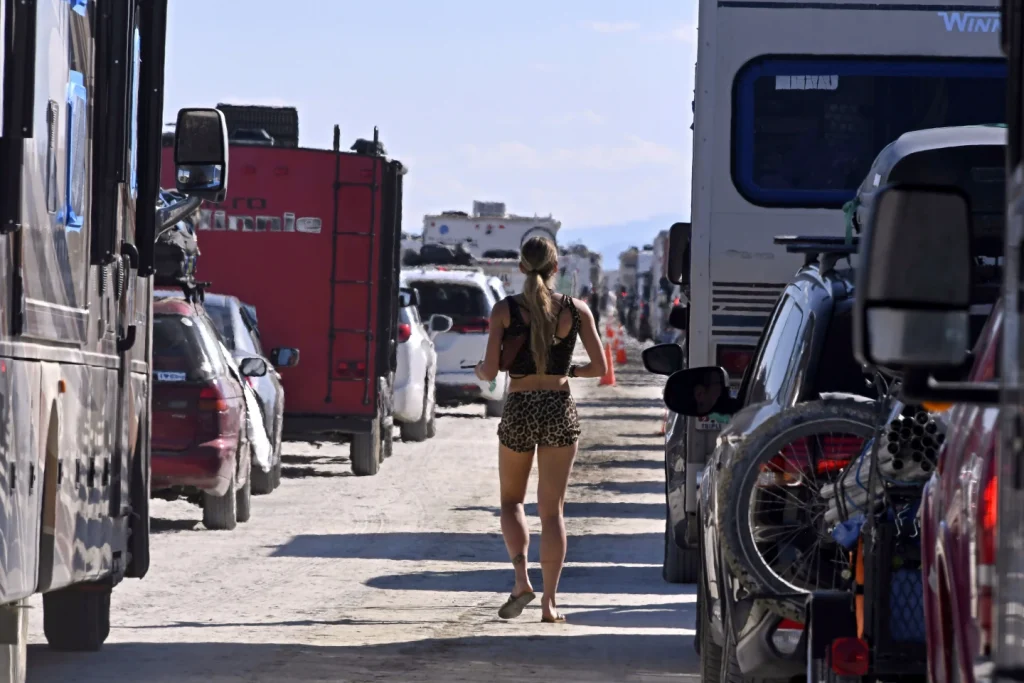
They reminisce about the event’s rawness and emphasize the decline in active participation, with an increasing number of attendees being labeled as mere spectators.
This sentiment is echoed by individuals like Mike “Festie” Malecki, a 63-year-old retired mortician turned sculptor, who has attended Burning Man 13 times.
Malecki highlights the shift in the demographic, stating, “There are more (people) who come out to party and don’t participate. We call them spectators.”
The dilemma facing Burning Man’s organizers revolves around the decision to either embrace a more structured and orderly approach or to uphold the event as a symbol of rebellion against authority, as co-founder Larry Harvey once described it.
Despite the challenges, individuals such as 71-year-old Ron Halbert, who has supported Burning Man’s orchestra for two decades, remain optimistic, emphasizing that it is still a gathering of the tribe.
Looking ahead, the event has been tentatively permitted to accommodate the same 80,000 attendees next year. While organizers are contemplating minor changes, they generally resist imposing new regulations, according to Executive Director Marian Goodell.
However, critics on social media have voiced their discontent, decrying the chaos left behind this year and ridiculing the festival’s “leave-no-trace” ethos, while labeling the participants as “hippies.”
In conclusion, the evolving nature of Burning Man has sparked a contentious debate regarding its future direction.
As the event continues to attract a diverse array of participants and undergo significant growth, it remains to be seen how Burning Man will navigate the tensions between tradition and change, participation and spectatorship, and order and rebellion.
The annual gathering known as Burning Man has long been a symbol of radical self-expression, communal living, and artistic freedom.
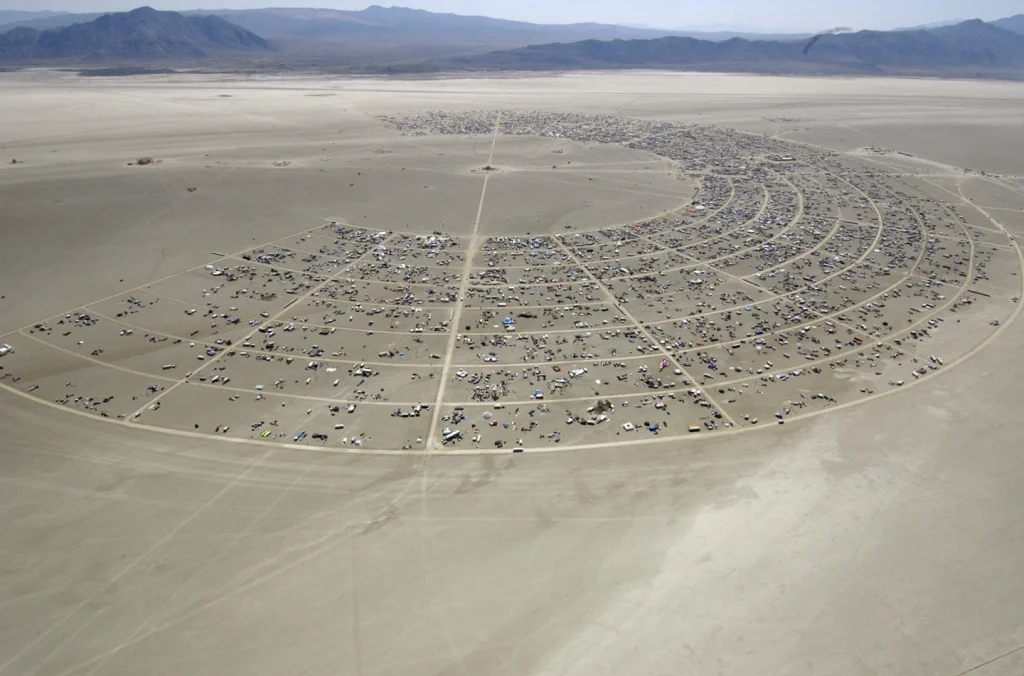
However, in recent years, the event has faced criticism and concerns about its evolving nature. The 2019 edition of Burning Man, in particular, was marked by unexpected challenges, including heavy rains that tested the resilience of participants and underscored the core principles of the event.
Katrina Cook of Toronto observed that the adverse weather conditions served to filter out individuals who were not genuinely committed to the founding principles of participation and radical self-reliance.
This sentiment was echoed by Mark Fromson, who found himself seeking shelter in another camp due to the inclement weather.
Fromson highlighted the principle of unconditional gift giving, emphasizing the importance of mutual support and generosity within the Burning Man community.
Amidst the challenges posed by the weather, Jeffrey Longoria of San Francisco emphasized the inevitability of evolving core principles as a new generation becomes involved in the event.
He noted the influx of individuals who may not fully embody the original spirit of Burning Man, expressing concerns about the potential dilution of its fundamental values.
Soren Michael, a technology worker from Los Angeles, highlighted the significant shift in the event’s dynamics brought about by the ability to communicate with the outside world from the desert.
This development marked a departure from the earlier appeal of disconnection, raising questions about the impact of technological connectivity on the authentic experience of Burning Man.
The increasing visibility of Burning Man in mainstream culture, as evidenced by its portrayal in television and media, has drawn attention from a diverse range of individuals, including scholars and celebrities.
The event’s growing popularity has led to the emergence of luxury camping experiences, sparking debates about their compatibility with the event’s core principles.
The influx of affluent attendees, including billionaires and celebrities arriving in private jets, has prompted discussions about the evolving demographics and values of the Burning Man community.
Marian Goodell, a prominent figure associated with Burning Man, addressed the concerns surrounding the rise of luxury camping, emphasizing the need to distinguish between comfort and disengagement.
She underscored the enduring purpose of Burning Man, which centers on fostering a creative and stimulating environment that encourages participants to carry its essence back to their own communities.
The evolution of Burning Man raises profound questions about the preservation of its founding principles in the face of changing demographics, technological advancements, and societal influences.
As the event continues to attract a diverse array of participants and undergoes transformations, it is essential to critically examine the impact of these changes on its core ethos.
The challenges and controversies surrounding Burning Man serve as a reminder of the delicate balance between evolution and preservation.
While the event’s growth and visibility have brought valuable opportunities for cultural exchange and artistic expression, they have also raised concerns about the potential erosion of its original values.
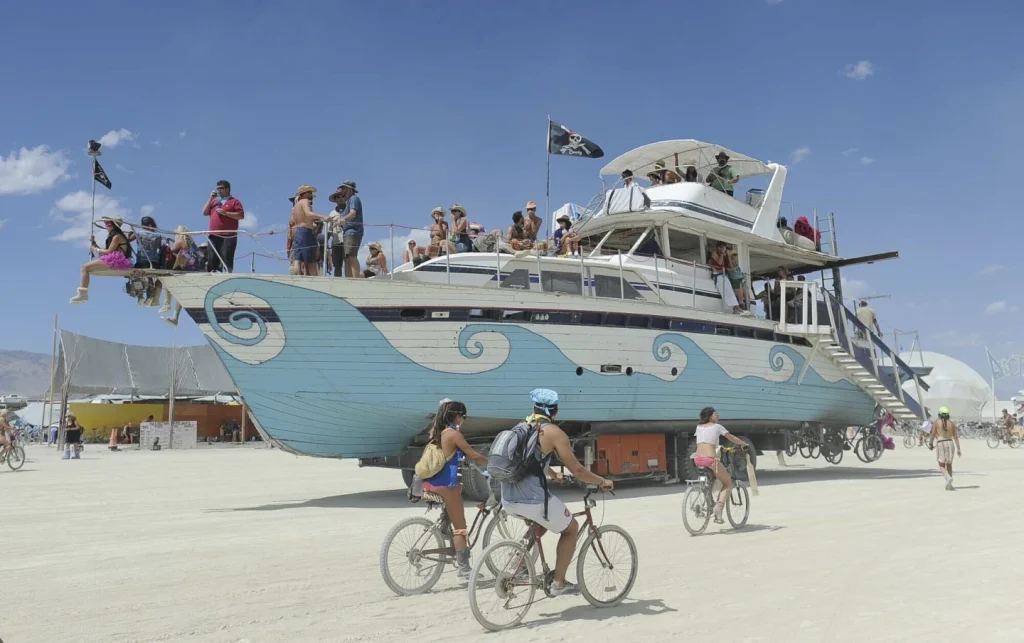
As Burning Man navigates the complexities of its evolving identity, it is imperative to engage in thoughtful discourse and reflection to ensure that its fundamental principles endure.
In conclusion, the narrative of Burning Man’s evolution reflects broader societal shifts and challenges. The event’s ability to adapt to changing circumstances while staying true to its core values is a testament to its resilience and enduring significance.
By engaging in open dialogue and fostering a spirit of introspection, the Burning Man community can navigate the complexities of its evolution while upholding the principles that have defined it for decades.
